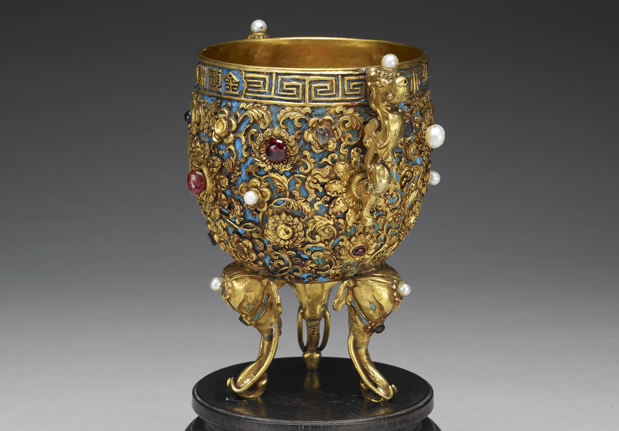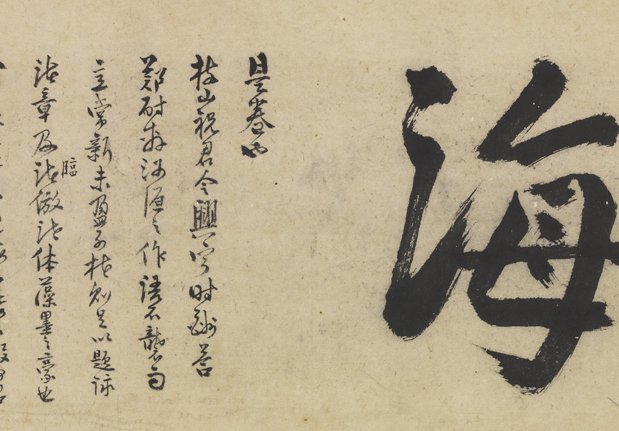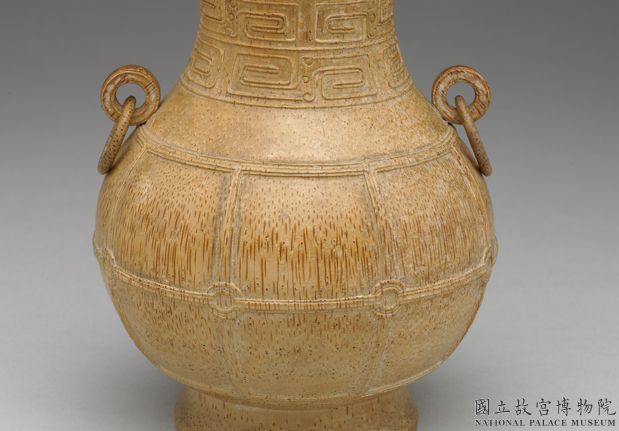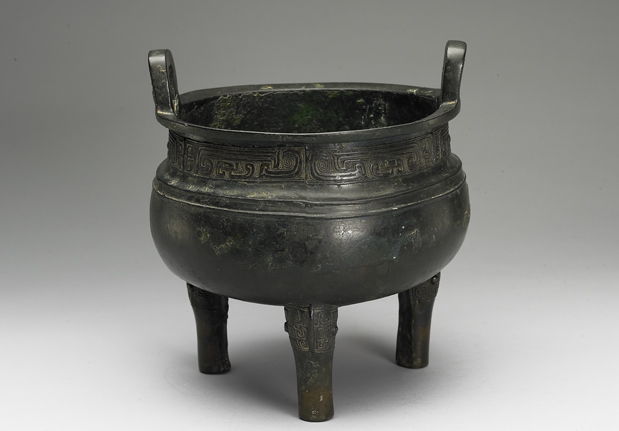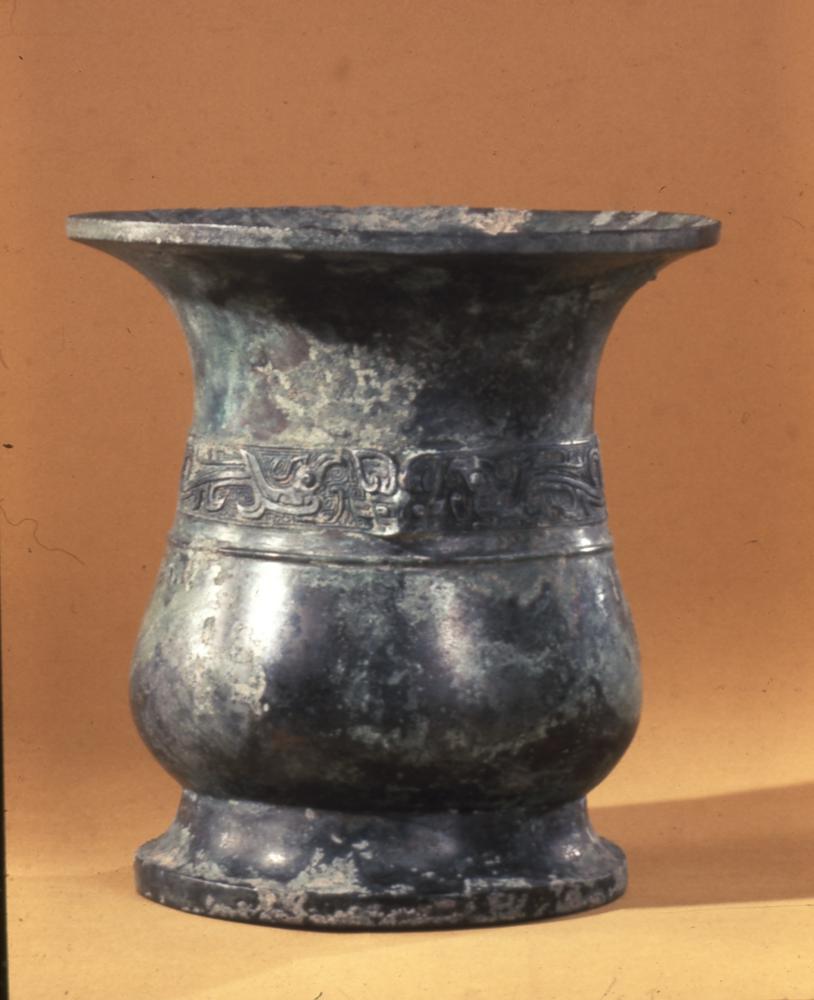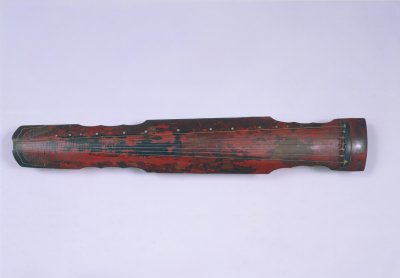Period:Ming dynasty Production date:1600-1628 (circa)
Materials:porcelain
Technique:glazed, gilded, kinrande, underglazed,
Subjects:lotus
Dimensions:Diameter: 11.50 centimetres Height: 5.50 centimetres
Description:
A pair of porcelain bowls with underglaze blue, red enamel and gold ‘kinrande’ decoration. Each of these bowls has deep rounded sides and a tapering foot with a chatter-marked base. Inside, in the bottom, they are painted in underglaze blue with a man, dressed in a round-necked robe and gauze hat. He is shown standing on a cloud and holding a branch aloft in his right hand with a single blue outline around the rim. Outside both bowls are covered with iron-red overglaze and with ‘kinrande’ [gold brocade] lotus scroll which has badly worn, leaving only traces of the four large blooms and feathery scrolling leaves. The two-character mark in a single ring in underglaze blue on the base reads 丹桂 ‘dan gui’ [cinnamon or red cassia]. The rim is badly chipped.
IMG
![图片[1]-bowl BM-Franks.843-China Archive](https://chinaarchive.net/Ming dynasty/Ceramics/mid_00268910_001.jpg)
Comments:Harrison-Hall 2001:The figure represents a scholar successful in the civil service examinations. According to legend, the goddess Chang E, who lives in the moon, awarded scholars who passed the imperial examinations ranking first with a sprig of celestial cassia. The cassia blooms in China in the autumn, when the civil service examinations took place, and it became an emblem of scholastic success. The chatter-marked base, ill-fitting glaze and deep cobalt blue all suggest that these bowls were made in the late Ming period during the late Wanli to Tianqi reign. They are much coarser than the red ‘kinrande’ examples potted in the Jiajing era (such as BM Franks.482A+).Hobson describes these particular Franks Collection bowls as having a Venetian leather case, ‘made no later than the sixteenth century’. However, the case has not been found in the Museum.
Materials:porcelain
Technique:glazed, gilded, kinrande, underglazed,
Subjects:lotus
Dimensions:Diameter: 11.50 centimetres Height: 5.50 centimetres
Description:
A pair of porcelain bowls with underglaze blue, red enamel and gold ‘kinrande’ decoration. Each of these bowls has deep rounded sides and a tapering foot with a chatter-marked base. Inside, in the bottom, they are painted in underglaze blue with a man, dressed in a round-necked robe and gauze hat. He is shown standing on a cloud and holding a branch aloft in his right hand with a single blue outline around the rim. Outside both bowls are covered with iron-red overglaze and with ‘kinrande’ [gold brocade] lotus scroll which has badly worn, leaving only traces of the four large blooms and feathery scrolling leaves. The two-character mark in a single ring in underglaze blue on the base reads 丹桂 ‘dan gui’ [cinnamon or red cassia]. The rim is badly chipped.
IMG
![图片[1]-bowl BM-Franks.843-China Archive](https://chinaarchive.net/Ming dynasty/Ceramics/mid_00268910_001.jpg)
Comments:Harrison-Hall 2001:The figure represents a scholar successful in the civil service examinations. According to legend, the goddess Chang E, who lives in the moon, awarded scholars who passed the imperial examinations ranking first with a sprig of celestial cassia. The cassia blooms in China in the autumn, when the civil service examinations took place, and it became an emblem of scholastic success. The chatter-marked base, ill-fitting glaze and deep cobalt blue all suggest that these bowls were made in the late Ming period during the late Wanli to Tianqi reign. They are much coarser than the red ‘kinrande’ examples potted in the Jiajing era (such as BM Franks.482A+).Hobson describes these particular Franks Collection bowls as having a Venetian leather case, ‘made no later than the sixteenth century’. However, the case has not been found in the Museum.
© Copyright
The copyright of the article belongs to the author, please keep the original link for reprinting.
THE END
